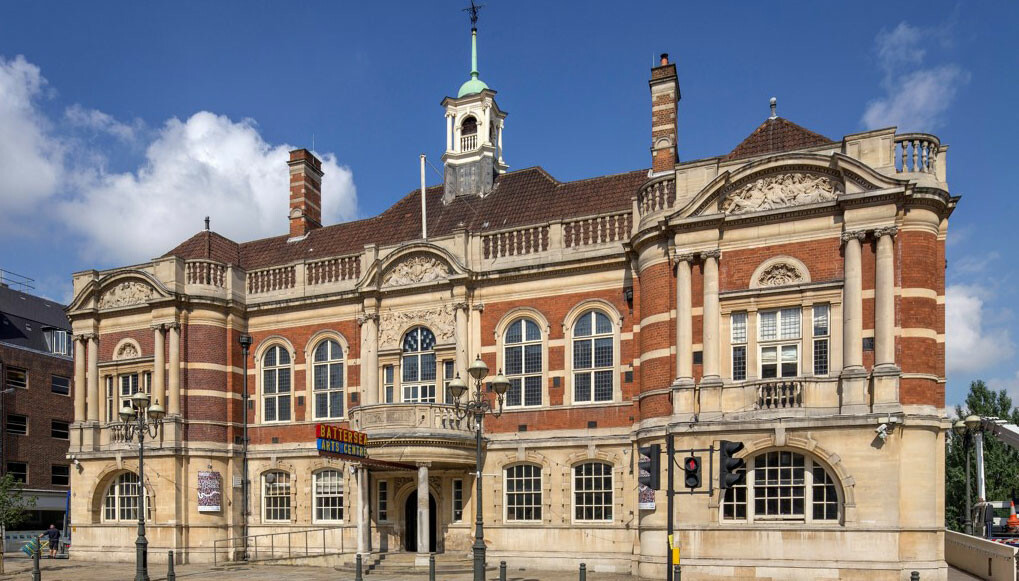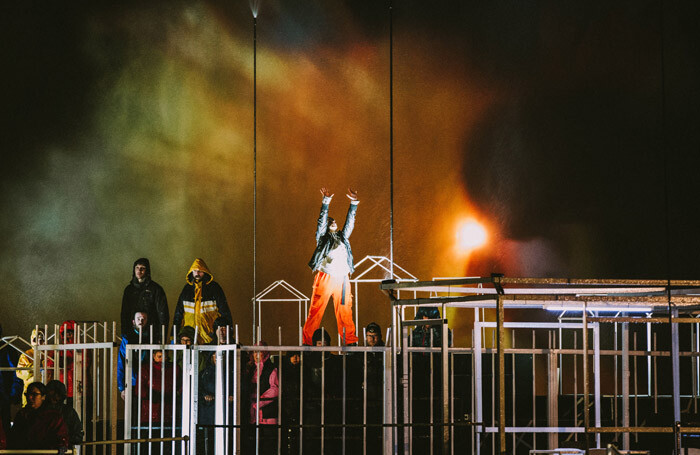The theatre still commissions and supports artists who make some of the UK’s most radical theatre, but in recent years it has rethought its mission. It no longer focuses on creating the “future of theatre”—a laudable purpose, but not one of much interest to the many who doubt theatre is for them. Instead, it concentrates on inspiring and supporting people to take creative risks to shape their own and their communities’ future, whether those people define themselves as artists or not.
The Scratch Hub, situated in the basement below the town hall, is home to more than a hundred start-up enterprises and new creative organizations based on a membership model. It’s curated—so is not merely an office space for hire—and boasts a mix of companies working in the fields of film, fashion, music, and social enterprise. Many of them are created by young people from the widely diverse local social housing projects, where there are few opportunities.
The organization’s shift in purpose is manifest in something like the Scratch Hub, according to artistic director David Jubb, as it allows them to support the development of other people’s ideas and become a facilitator. “We’ve always done that with artists, but it’s been a hop, skip and a jump to recognise that we can do that with the rest of our community, rather than trying to persuade our community that they should be interested in what we do and make what we do,” Jubb told me in an interview last year for the Stage. “This is the way we can support the development of their ideas and not impose ours.”
The changes made at Battersea Arts Centre reflect a growing willingness from British arts institutions, theatres, and theatremakers to rethink and re-imagine their purpose in the twenty-first century. They are asking questions around who they serve, but also around who they do not yet serve and how they can address that.
The danger is that unless theatre embraces a wider civic role, it will simply come to be seen as increasingly out of touch and elitist.
The urgent need to do so is reflected by the fact that the 2015 Warwick Commission report found that the wealthiest, best educated, and least ethnically diverse 8 percent of the population are the most culturally active. The danger is that unless theatre embraces a wider civic role, it will simply come to be seen as increasingly out of touch and elitist. Not for me or for you but for us.
How can theatres and other arts organizations fulfill a civic role, engage with their communities, and find different ways to be fully embedded in their locale? How can they start behaving less like monasteries and more like town squares, a place to which everyone has access, and everyone is welcome? A town or village square is the social hub for community, rooted in a particular place and also potentially a space of learning, debate, and opportunity.
To move in this direction, theatres need to get out of the arts silos: democratizing the way they work, the way their spaces are used, and the way they welcome people in and go out to meet them.
If Battersea Arts Centre offers one model of what a theatre can be, one that is actively and vividly doing something about the inequalities of opportunity that divide British society, then companies such as Good Chance, working with refugees in Calais and Paris, or Derby Theatre, which calls itself a learning theatre and has close ties with the local university, offer others.
Another example is Slung Low, a company situated in Holbeck, a deprived area of inner-city Leeds in Northern England, which puts learning at its heart. It has recently opened a pay-what-you-can cultural community college, where most of the subjects—everything from cooking vegetarian Indian food to blacksmithing—have been suggested by the local community. This challenges the notion of cultural engagement, which often has a very narrow definition.
Like at Battersea Arts Centre, this new initiative doesn’t mean that Slung Low will no longer make theatre—it will continue to produce the large-scale participatory shows for which it is justly famed—but artistic director Alan Lane has described the decision to open the college on the grounds that “it is the most useful thing we could do.” It does something immediately for the local community, something that is rooted in local need and that helps build social capital. It rethinks the mission of a theatre company from one that only produces plays to a far broader one that offers skills and enrichment for all who want it. After all, however good your revival of Blithe Spirit is, it is unlikely it will really change anybody’s life, but the cultural community college just might.










Comments
The article is just the start of the conversation—we want to know what you think about this subject, too! HowlRound is a space for knowledge-sharing, and we welcome spirited, thoughtful, and on-topic dialogue. Find our full comments policy here
Hi Lyn- thanks for the article. a tremendous amount of civic theatre and cross-disciplinary work in relation to what you are observing in the UK all around the US, and growing. Sharing here just a few artists and organizations you may find interesting, and I'd enjoy a conversation sometime about how the work is flourishing, struggling, deepening, and evolving on all sides of all oceans...Albany Park Theater Project in Chicago; ArtSpot Productions in New Orleans; SippCulture in Mississippi; John Malpede and LAPD in Los Angeles; Mixed Blood Theater in Minneapolis; Mirror Image Arts in Denver; Irondale and EPIC both in NYC; Goodman Theater (Willa Taylor's work) in Chicago; Johnny Stallings in Oregon; Theater Offensive in Boston; Double Edge in Ashfield, MA; Betty's Daughter's Arts Collaborative in Brooklyn; CarpetBag Theater; Andrea Assaf; Luis Alfaro; Ragged Wing in Oakland; Performing Statistics; Just Act in Philadelphia; Oregon Shakespeare Festival; Clyde Valentin & SMU in Dallas...to start.
I have been avidly reading your writing on theatre for years, Lyn, and am very glad to see you on HowlRound. Thank you for this contribution.
In the US, the funding and governance structures put enormous power over the institutions in the hands of a very few. And, often, the desire- or imperative- of the institution to connect in meaningful ways with the community, ways that don’t start from a value of “here we made this— come see it”, are viewed by the power brokers as “instrumentalizing” art. Forcing it to “be useful”, and therefore rendering it “not art”.
Do theaters in the UK face similar pressures despite the greater role of public funding?
At ArtsEmerson we are working every day to evolve and develop our vision of our company as a civic leader and a community asset. And we have some level of privilege in this effort by virtue of our relationship to Emerson College, which reduces our dependence on traditional owners of the culture in Boston. But we nevertheless face down criticism regularly from donors and critics who damn us for being useful. I am proud to say, though, that even in our nascent stage of these efforts we have a diverse and invested community of people from all around the region who would go to bat for us in a crisis. And we for them.